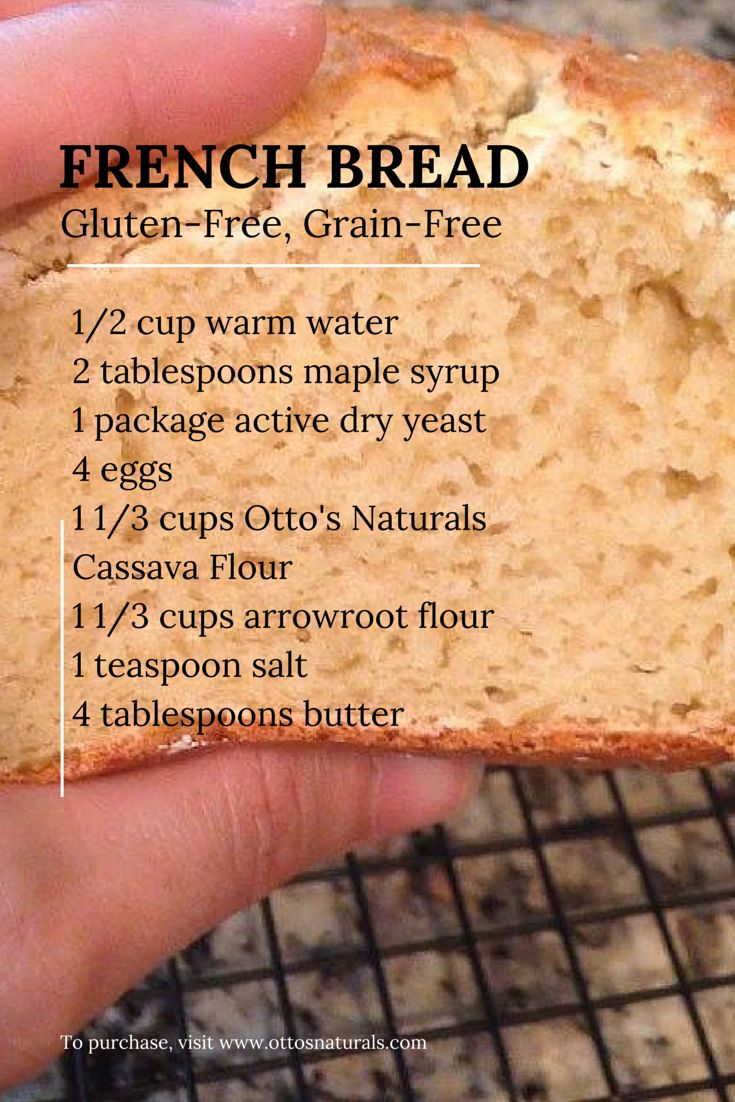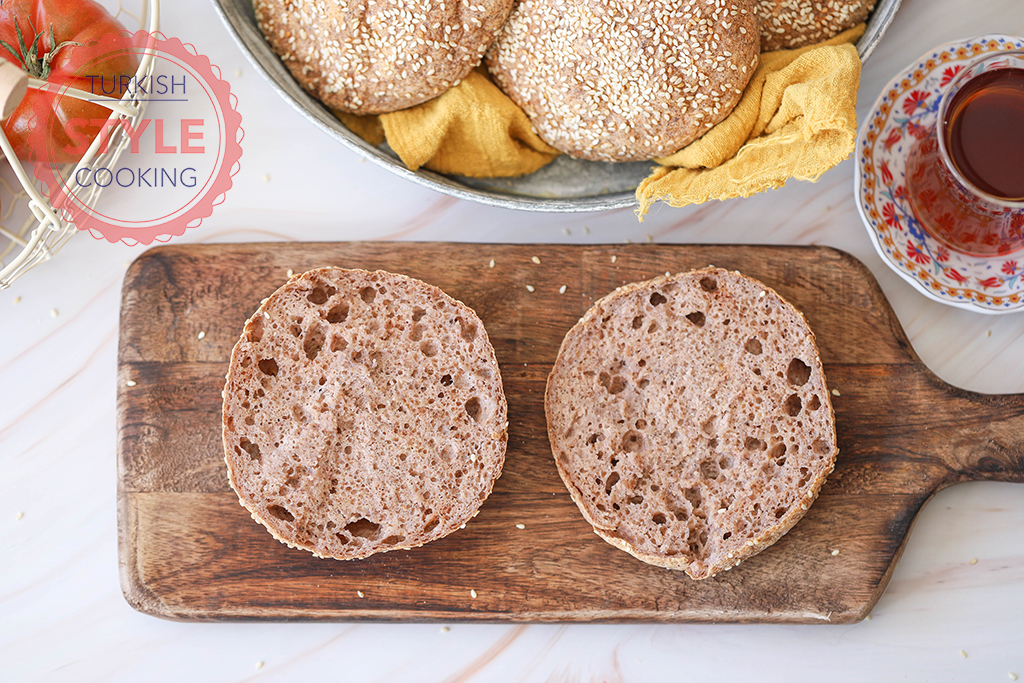Gluten-Free and Yeast-Free Bread
In a world increasingly mindful of dietary restrictions, Gluten-Free and Yeast-Free Bread has emerged as a delicious and nutritious alternative for those seeking to enjoy their favorite baked goods without compromising their health. Whether you’re allergic to gluten, have a sensitivity, or simply prefer to avoid yeast, there are countless delightful Gluten-Free Bread Recipes that can cater to your needs. In this post, we will explore various Yeast-Free Bread Options that not only satisfy cravings but also offer numerous Health Benefits of Gluten-Free and Yeast-Free Bread. Additionally, we’ll provide helpful tips for baking that perfect loaf and highlight common pitfalls to steer clear of. Get ready to embark on a flavorful journey towards wholesome, homemade bread!
Understanding Gluten-Free and Yeast-Free Bread
Gluten-Free and Yeast-Free Bread is an excellent alternative for those with dietary restrictions or sensitivities. This type of bread caters to individuals who are gluten-intolerant, those who suffer from conditions like celiac disease, and anyone seeking a lighter, yeast-free option. Understanding these breads is critical in appreciating their unique qualities and benefits.
Key Characteristics:
- No Gluten: Made from alternative flours such as almond, coconut, or rice flour, ensuring no gluten presence.
- No Yeast: Typically rises through the use of baking soda or baking powder, rather than traditional yeast fermentation.
Benefits of Choosing Gluten-Free and Yeast-Free:
| Aspect | Details |
|---|---|
| Digestibility | Easier on the digestive system for many people. |
| Nutrient-Dense | Often incorporates superfoods and nutrient-rich ingredients. |
| Versatile | Suitable for various dietary preferences and creative recipes. |
Why Choose Gluten-Free and Yeast-Free Bread?
- Health-Conscious Option: Promotes a healthier lifestyle by avoiding gluten and yeast-related issues.
- Culinary Creativity: Invites experimentation with different flours and additives, leading to diverse flavors and textures.
- Suitable for Various Diets: Aligns with paleo, keto, and vegan diets, fulfilling diverse needs.
In summary, Gluten-Free and Yeast-Free Bread presents an inviting alternative to traditional bread. It opens doors to health benefits, unique ingredients, and dietary inclusivity, making it a wonderful addition to any meal. Whether you are looking for Gluten-Free Bread Recipes or exploring Yeast-Free Bread Options, understanding these essentials will enhance your baking experience.

Key Ingredients for Gluten-Free and Yeast-Free Bread
When crafting Gluten-Free and Yeast-Free Bread, selecting the right ingredients is crucial to achieve a delicious texture and flavor. Below is a guide to the foundational components that make these bread varieties unique and satisfying.
Essential Ingredients
Gluten-Free Flours:
- Almond Flour – Adds moisture and nutty flavor.
- Coconut Flour – High in fiber and absorbs moisture well.
- Rice Flour – Provides a light and airy texture.
- Oat Flour – Offers a subtle sweetness and increased nutrients.
Binding Agents:
- Xanthan Gum – Essential for structure and binding.
- Flaxseed Meal – Excellent source of Omega-3 and acts as a natural binder when mixed with water.
Liquid Components:
- Nut Milk or Water – Hydrates dry ingredients and helps to create the batter.
- Applesauce or Yogurt – Adds moisture and flavor, enhancing the bread’s final texture.
Sweeteners and Seasonings
Natural Sweeteners:
- Honey or Maple Syrup – Provides a touch of sweetness and aids in browning.
Herbs and Spices:
- Salt – Enhances flavor and assists in the overall fermentation process when using alternatives.
| Ingredient Type | Examples | Purpose |
|---|---|---|
| Gluten-Free Flours | Almond, Coconut, Rice, Oat | Base for the bread |
| Binding Agents | Xanthan Gum, Flaxseed Meal | Adds structure and elasticity |
| Liquid Components | Nut Milk, Applesauce | Hydrates and binds ingredients |
| Sweeteners and Seasonings | Honey, Salt, Herbs | Enhances flavor and moisture content |
In summary, understanding these key ingredients is critical for successfully creating delectable Gluten-Free Bread Recipes and exploring various Yeast-Free Bread Options. By carefully selecting these components, one can fully appreciate the Health Benefits of Gluten-Free and Yeast-Free Bread, making it a wholesome alternative for those with dietary restrictions.
Top Gluten-Free Bread Recipes to Try
Delving into the world of Gluten-Free and Yeast-Free Bread can be an exciting culinary journey. Below, we present a selection of tried-and-true recipes that are not only simple but also delightful in taste. With an abundance of ingredients to choose from, these recipes allow for flavor and health to coexist harmoniously.
Quick Gluten-Free Banana Bread
This moist and dense option is perfect for breakfast or an afternoon snack.
Ingredients:
- Mashed bananas
- Almond flour
- Baking soda
- Honey
- Eggs
Instructions:
- Preheat the oven to 350°F (175°C).
- Mix all ingredients until smooth.
- Pour into a greased pan and bake for 45 minutes.
Flaxseed and Coconut Bread
A nutty alternative, this bread is both nutritious and satisfying.
Ingredients:
- Ground flaxseed
- Unsweetened shredded coconut
- Olive oil
- Water
- Salt
Instructions:
- Combine flaxseed, coconut, and salt in a bowl.
- Stir in olive oil and water; mix well.
- Shape into a loaf and bake at 375°F (190°C) for 30 minutes.
Quinoa and Chia Seed Bread
Rich in protein, this Gluten-Free Bread Recipe is ideal for health-conscious eaters.
Ingredients:
- Cooked quinoa
- Chia seeds
- Sunflower seeds
- Oats (gluten-free)
- Water
Instructions:
- Preheat your oven to 350°F (175°C).
- Mix all ingredients and let sit for 10 minutes.
- Transfer to a loaf pan and bake for 40 minutes.
Summary of Top Recipes
| Recipe Name | Key Ingredients | Baking Time |
|---|---|---|
| Quick Gluten-Free Banana Bread | Bananas, Almond Flour | 45 minutes |
| Flaxseed and Coconut Bread | Flaxseed, Coconut, Olive Oil | 30 minutes |
| Quinoa and Chia Seed Bread | Quinoa, Chia Seeds, Sunflower Seeds | 40 minutes |
These Gluten-Free Bread Recipes not only cater to dietary restrictions but also encourage creativity in the kitchen. Allowing you to explore diverse flavor profiles, they represent just a fraction of the delightful Yeast-Free Bread Options available. Enjoy the healthful benefits while savoring every bite!
Exploring Yeast-Free Bread Options
When searching for alternatives to traditional bread, Yeast-Free Bread Options offer a variety of flavors and textures that can satisfy any palate. Here are some popular types of yeast-free bread to consider:
Soda Bread: This quick bread uses baking soda as a leavening agent instead of yeast. It delivers a delightful taste and can be made with various add-ins like fruits, nuts, or herbs.
Flatbreads: From pita to unleavened varieties, flatbreads are simple to make and versatile for numerous dishes. They’re perfect for wraps or accompanying dips.
Banana Bread: Often a favorite among families, banana bread can be easily adapted into a gluten-free variant. The natural sweetness of ripe bananas lends a moist texture, making it a delicious treat.
Pumpkin Bread: With warm spices and a rich flavor, pumpkin bread works well in both gluten-free and traditional recipes. It’s ideal for breakfast or an afternoon snack.
Oat Bread: Ground oats can serve as an excellent base for bread, providing a hearty texture while being completely Gluten-Free and Yeast-Free.
Key Characteristics of Yeast-Free Bread Options
| Type of Bread | Leavening Agent | Flavor Profile | Serving Suggestion |
|---|---|---|---|
| Soda Bread | Baking soda | Slightly sweet and tangy | Toasted with butter |
| Flatbreads | None (rolled out) | Simple, versatile | Serve with dips and spreads |
| Banana Bread | Baking soda | Sweet and moist | Breakfast or dessert |
| Pumpkin Bread | Baking soda | Spiced and rich | Snack or dessert |
| Oat Bread | None (ground oats) | Nutty and hearty | Toasted or as a sandwich |
Each of these Gluten-Free Bread Recipes can accommodate a variety of dietary needs while providing unique health benefits. Making use of alternative ingredients ensures that your baking adventures remain enjoyable and nutritious. Whether you abide by specific dietary restrictions or simply explore new flavors, these Yeast-Free Bread Options are perfect to include in your meal plan. Remember, the world of bread isn’t limited to yeast; get creative in the kitchen!

Health Benefits of Gluten-Free and Yeast-Free Bread
Embracing Gluten-Free and Yeast-Free Bread in your diet exposes you to a variety of health benefits. Such bread alternatives are particularly advantageous for those with gluten sensitivities or yeast allergies. Here are some key benefits to consider:
| Benefit | Description |
|---|---|
| Easier Digestion | Many find these breads easier to digest, reducing bloating and discomfort. |
| Reduced Inflammation | Eliminating gluten and yeast can help in alleviating inflammatory responses in the body. |
| Improved Energy Levels | Without the weight of gluten, many experience a boost in energy and vitality. |
| Support for Dietary Restrictions | Perfect for individuals following specific diets, such as celiac disease or candida. |
Additional Advantages:
- Nutrient Variety: Gluten-Free Bread Recipes often incorporate alternative grains and flours (like almond or coconut flour), which are packed with essential nutrients.
- Weight Management: Some people find it easier to maintain a healthy weight when eliminating gluten and yeast, as these substances can lead to cravings and overeating.
- Natural Ingredients: Many homemade Yeast-Free Bread Options focus on whole-food ingredients, promoting overall health and wellness.
By choosing Gluten-Free and Yeast-Free Bread, you not only meet dietary restrictions but also embrace a healthier approach to eating. The numerous options available make it simple to integrate these benefits into your meals, ensuring that everyone can enjoy the taste and health advantages of bread without unnecessary ingredients.
Tips for Baking Perfect Gluten-Free and Yeast-Free Bread
Baking Gluten-Free and Yeast-Free Bread can be a delightful yet challenging endeavor. To ensure your bread turns out perfectly every time, consider the following tips:
Choose the Right Flour
- Almond Flour: Adds a moist texture and nutty flavor.
- Coconut Flour: Great for density, but requires more liquid due to its absorbent nature.
- Rice Flour: Provides a light and fluffy bread base.
Add Binding Agents
A crucial step in creating Gluten-Free Bread Recipes is using effective binders. Options include:
- Xanthan Gum
- Psyllium Husk
- Chia Seeds: Mix with water to create a gelatinous substance.
These ingredients help ensure your bread has the right texture and structure without gluten.
Monitor the Baking Time
- Baking times for gluten-free and yeast-free breads often differ from traditional recipes. Keep a close eye, as they may bake faster.
- Use a toothpick test—insert it into the center; if it comes out clean, the bread is ready!
“Experiment with Flavors”
Try adding herbs, spices, or other ingredients like nuts and dried fruits. This enhances the taste, making your Yeast-Free Bread Options exciting and delicious!
Utilize Proper Equipment
- Mixing Bowls: Use larger bowls for adequate mixing.
- Loaf Pans: Opt for non-stick or silicone pans for easy removal.
- Thermometer: Aim for an internal temperature of 200°F for fully cooked bread.
Sample Baking Schedule
| Step | Time |
|---|---|
| Prepare Ingredients | 10 mins |
| Mix and Knead | 15 mins |
| Rise Time | 30 mins |
| Bake | 45 mins |
Following these tips will guide you towards baking Gluten-Free and Yeast-Free Bread that is not only healthy but also deliciously satisfying!
Common Mistakes to Avoid when Making Gluten-Free and Yeast-Free Bread
Baking Gluten-Free and Yeast-Free Bread can be a delightful venture, but it does come with its own set of challenges. Many home bakers encounter common pitfalls that can compromise the texture and flavor of their creations. By identifying these mistakes, you can elevate your baking game and enjoy delectable results every time.
Key Mistakes to Avoid
Ignoring Ingredient Measurements
Accurate measurements are crucial. Use a kitchen scale for precision, particularly with gluten-free flour blends that can vary in density.
Neglecting to Use Binding Agents
Gluten-free recipes often require binding agents like xanthan gum or psyllium husk. Omitting these can lead to crumbly bread.
Skipping the Preheating Step
Always preheat your oven. Starting with a hot oven helps create the right crust and structure for your Gluten-Free Bread Recipes.
Overmixing the Batter
While gluten is absent, overmixing can still lead to a dense loaf. Mix just until combined for a light and airy texture.
Using Improper Flour Blends
Not all gluten-free flours behave the same way. It’s essential to use a blend specifically designed for baking.
Not Allowing Enough Cooling Time
Cutting into your bread too soon can make it gummy. Always allow it to cool fully before slicing.
Quick Reference Table
| Mistake | Solution |
|---|---|
| Ignoring Ingredient Measurements | Use a kitchen scale for accuracy |
| Neglecting Binding Agents | Include xanthan gum or psyllium husk |
| Skipping Preheating | Always preheat the oven |
| Overmixing the Batter | Mix just until combined |
| Using Improper Flour Blends | Utilize a quality gluten-free flour blend |
| Not Allowing Enough Cooling Time | Allow bread to cool completely before slicing |
By steering clear of these common mistakes, you will enhance your baking skills and enjoy the myriad Health Benefits of Gluten-Free and Yeast-Free Bread. Experiment, learn, and savor every bite of your lovely creations!
Frequently Asked Questions
What are some common ingredients in gluten-free and yeast-free bread?
Gluten-free and yeast-free bread is typically made from alternative flours such as almond flour, coconut flour, or rice flour. These flours are often combined with binding agents like xanthan gum or psyllium husk to create a suitable texture. Additionally, eggs are frequently used to help with rising and binding, while ingredients such as applesauce or vinegar can lend moisture and flavor. It’s essential to choose high-quality, nutrient-dense ingredients to ensure a healthy end product.
Can I use a bread machine to make gluten-free and yeast-free bread?
Yes, a bread machine can be an excellent tool for making gluten-free and yeast-free bread, but it is crucial to choose a machine specifically designed for gluten-free baking. These machines often include settings that accommodate the unique textures and densities of gluten-free flours. Always follow a recipe tailored for bread machines, and keep in mind that gluten-free bread typically requires different mixing and baking times than traditional bread. Experimenting with various recipes can lead to delightful results.
What are the benefits of gluten-free and yeast-free bread?
Gluten-free and yeast-free bread is beneficial for individuals with specific dietary needs, such as those diagnosed with celiac disease or gluten sensitivity. This type of bread can also be advantageous for individuals following a low-carb or ketogenic diet. Furthermore, avoiding yeast may help those who experience digestive issues as yeast can sometimes contribute to bloating or discomfort. Additionally, this bread can offer a variety of flavors and textures by incorporating diverse ingredients like nuts, seeds, and spices, making it a delicious alternative.
How should I store gluten-free and yeast-free bread to maintain freshness?
To keep gluten-free and yeast-free bread fresh, it is best to store it in an airtight container at room temperature for up to a few days. For longer storage, consider freezing the bread by slicing it and wrapping it tightly in plastic wrap or aluminum foil, followed by placing it in a freezer-safe bag. When you are ready to enjoy it, simply toast the slices or let them thaw at room temperature. This method helps maintain both flavor and texture while preventing spoilage.



